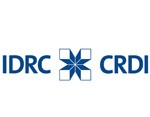A new study finds that mutations in two very different genes can have similar effects on developing brain cells, shedding light on the origins of autism.
Researchers looked at neuronal stem cells with mutations in one of two genes; in humans, each of these mutations leads to a different neurodevelopmental disorder, although both disorders are on the autism spectrum. At the molecular level, the team was surprised to notice changes to both sets of cells that were very similar to each other, as well as being similar to those experienced by brain stem cells as they mature.
The results help explain why there is no single gene for autism, and suggest that changes to genes that control the rate at which brain cells develop may be one of the mechanisms behind autism-spectrum disorders.
Paper available on request.
The original research paper published in the American Journal of Human Genetics on October 9, 2014.
Names and affiliations of selected authors

